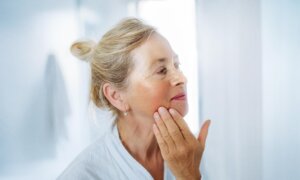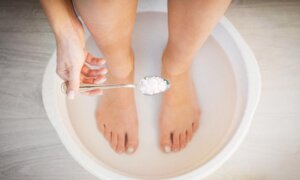Potential Risks of the Keto Diet
Numerous studies have raised concerns regarding the long-term safety of the keto diet.
- Accelerated Organ Aging: An animal study published in Science Advances showed that the keto diet caused cellular aging in multiple organs, including the heart and kidneys, in mice.
- Low Blood Sugar: Long-term adherence to the keto diet may impair glucose metabolism, increasing the risk of hypoglycemia.
- Osteoporosis: A clinical case report published in the New England Journal of Medicine highlighted that a high-fat, low-carbohydrate diet could lead to ketoacidosis—a severe condition marked by excessive acid buildup in the blood. Prolonged ketoacidosis accelerates calcium loss in bones, potentially leading to osteoporosis.
- Fatty Liver Disease: A 2023 study on mice found that the keto diet worsened glucose intolerance and could induce non-alcoholic steatohepatitis (a severe form of fatty liver disease) and fibrosis (a condition in which too much collagen, a protein that forms connective tissue, is formed as a response to an injury, leading to the formation of scar tissue)
- Vascular Damage: A 2020 review indicated that ketone bodies, which are molecules produced by the liver when the body doesn’t have enough sugar for energy, can form adducts with proteins, contributing to vascular injury, akin to protein glycation caused by glucose but with an even stronger effect. An adduct is a distinct molecular species formed from the combination of two original molecules.
Managing Blood Sugar With a Rice-Based Diet
Many people with blood sugar issues are hesitant to eat rice. The truth is, according to Hung, that with the right approach, a balanced diet that includes carbohydrates, proteins, and fats can effectively control blood sugar.
- Choose Whole, Unprocessed Foods: Opt for whole-grain rice, which retains its intact starch structure. It provides balanced nutrition and digests at a slower rate, preventing rapid spikes in blood sugar.
- Cool Your Rice Before Eating: After cooking, let the rice cool for at least 15 minutes. Cooling increases the resistant starch content, which reduces absorption in the small intestine and provides nutrients for probiotics in the large intestine.
- Follow an Optimal Eating Order: Eat in this sequence: meat, vegetables, mushrooms, rice, and fruit. For vegetarians, substitute legumes for meat. Starting with protein-rich foods like meat or beans kickstarts digestion and absorption, allowing the body to better process the cooled rice, Hung said.
- Maintain Consistent Portions: Include a consistent portion of rice with each meal. Hung recommends eating about 450 grams of rice daily (roughly 2.5 bowls), based on the recommendation of the U.S. Food and Nutrition Board that adults should consume 130 grams of carbohydrates per day.
A review indicated that the long-term efficacy, safety, and health benefits of the keto diet currently lack sufficient supporting data. On the other hand, a non-keto diet with a daily intake of 100 to 150 grams of carbohydrates, when well-managed, may prove to be more practical, according to Hung.
A Remarkable Success Story
Hung has shared hundreds of clinical success stories regarding diabetes remission on his Facebook page. One notable case involves a renowned American surgeon living in Taiwan.


















